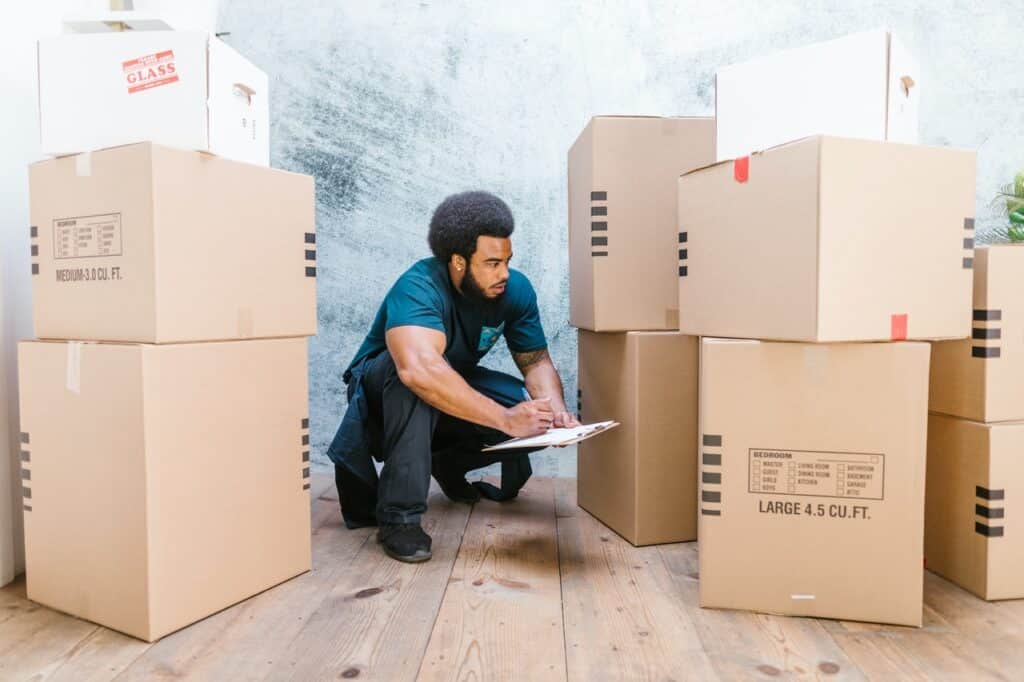1. Optimize your collection
You hear it repeatedly from us: do not pay to move items that you put away on arrival. Make your spring cleaning before packing and travel a little lighter.
When you clean up your collection, try sorting your books into 3 stacks to ease the process:
1. Keep.
2. Donate.
3. Sell.
The key to efficient packing is not spending time worrying about each item, hence the undecided stack. Nostalgia can be a real time sucker. If you’re not sure, put that tempting title in pile 2 or 3 and come back to it another time.
If you have other family members in your household, ask them to do the same. Have the entire batch of books sorted and sorted out so you only have to donate once. Throughout the Netherlands there are various thrift stores and libraries.
If you discover that one of your books is damaged, it’s best to recycle them.
2. The right materials
Book boxes are often overpacked and are notorious for their weight. For DO-it-yourselfers, they can also pose injury risks if they are not properly packed.
Start with the right materials: that means a thicker cardboard box than standard. You can buy book boxes from the moving company (VerhuisGoedkoop).
Bigger is not better when moving books, the more there is in a box the heavier it is and harder to lift and transport. Small and sturdy is the goal, we recommend 25″ x 25″ x 36″. You’ll also want strong packaging tape to ensure the box is secure and tightly sealed, along with wrapping paper as padding to prevent them from shifting during transport.
If your box is firmly assembled, run the tape from the bottom to halfway down the sides of the box. Then line the bottom of the box with wrapping paper to create a layer between any moisture from the outside and your first layer of books. If you are moving valuable books, you can also line the bottom of the box with bubble wrap, which is also water resistant.
3. How do you pack different types of books?
Now that you’re ready to fill boxes, group the books by size and value. The general rule is that heavier books should be on the bottom and lighter books on top.
If you have rare editions that are a collectible, it’s better to carry them in your moving suitcase than to mix them with the rest of your library during transportation.
If you are packing valuable hardcover books, wrap them separately and place them upright in the box with the backs facing the wall of the box. You can also place a sheet of thick cardboard between each book to protect them from shifting individually. If they are large and heavy books, use several smaller boxes instead of putting another layer of hardcover books on top.
Less expensive books with hard covers can be quickly and safely placed flat in the bottom of the box and stacked on top of each other. Do not place your books with the pages facing the bottom of the box, as the covers may collapse and crease. Some customers also put their books back down at the bottom of the box, but this can lead to damage to the layers above if not done carefully.
Regular paperbacks can be stacked in neat rows, stacking similar sizes on top of each other and filling empty space with wrapping paper. You can mix the stacking methods here, but avoid placing one of them at an angle or tightly pressed, as it will deform during transport.
When packing these categories, provide a buffer between the books and the box if there are any openings, by using crumpled wrapping paper.
4. Final steps
When your box is ready to be sealed, place an extra layer of wrapping paper over the top of your books before closing it. Generously put tape over the seal and then grab your marker and label the box in detail.
If your books are saved, these steps are safe for the short term. For long-term storage, you can replace the wrapping paper with acid-free paper to prevent discoloration over time.
Once you arrive at your destination, unpacking is a breeze. Even young family members can help, as unpacking books is a simple task where you can collapse a few empty boxes fairly quickly and free up some space.
There’s nothing like putting those familiar titles on the bookshelf and feeling like it’s already home.


